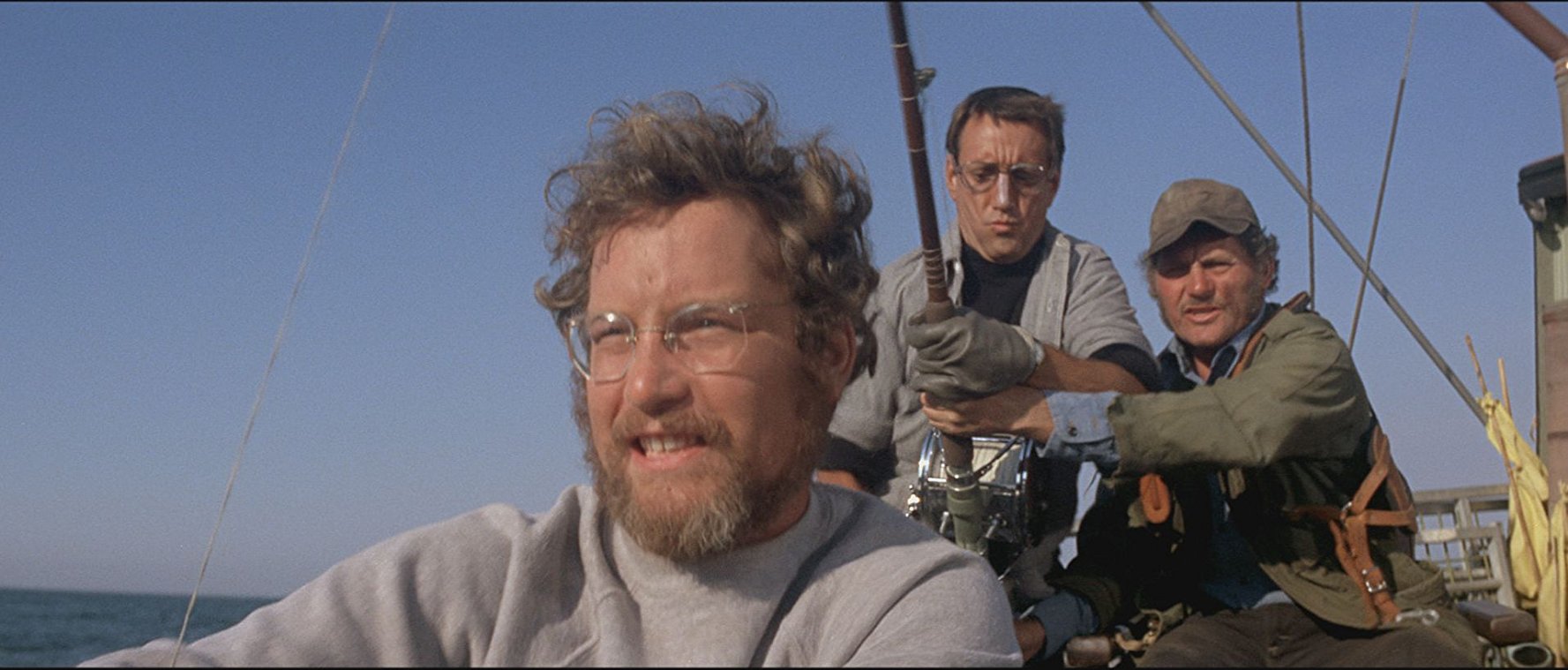
One of the greatest films of all time, Jaws is a quintessential American movie.
With one of the most iconic scores in all of cinematic history, an innocent swimmer, Chrissie Watkins (Susan Backlinie), getting attacked by a shark would change the beach forever. Police chief Martin Brody (Roy Scheider) had the right idea to close the beaches following Chrissie’s autopsy. However, Amity mayor Larry Vaughn (Murray Hamilton) re-opens the beach out of fear of losing money.
In one fell swoop the town’s mayor has doomed his entire city. Any one person at any moment could be attacked by a shark and left for dead. All because Vaughn doesn’t want the economy to fail. It’s not until another shark attack happens that the town is in chaos. With a bounty placed on the shark, Quint (Robert Shaw) offers his services while oceanographer Matt Hooper (Richard Dreyfuss) finds himself involved shortly thereafter.
Brody and Hooper work together well but Quint seems to have his own ideas. Quint gets the crazy idea to bash a radio that could very well save their lives. Like, really?!? Why would you do such a thing?!? Everyone has to work together to kill the shark. Brody may be the one that ultimately gets the job done but it was an uphill battle to say the least.
It may be hard to believe that director Steven Spielberg wanted to leave the project before it even started. Who could blame him for not wanting to be typecast at the time? Maybe he foresaw what would eventually happen on set? In any event, Spielberg stuck with it. Despite all the horror that surrounded the making of Jaws, the film would change the game. The horror was so much that the film was known by Flaws on set. Anything that could go wrong did go wrong.
When it came to how he framed and presented the shark, Spielberg appears to have gone for the Alfred Hitchcock thriller approach. The less we see the better. When we do finally see the shark, it’s clearly an animatronic. If it were a film being made years later, Spielberg would probably opt for CGI and make it a scarier animal. For the technology that was allowed at the time, Spielberg made the best possible film that he could at the time.
Can you imagine a time when blockbuster films were not heavy on special effects? You’ll have to take a time machine back to 1975. I know that it’s crazy but it’s definitely true. Without Jaws, we wouldn’t have a lot of films. Well, we might have them but they would not be marketed the same way. This is because Jaws was a game changer when it comes to American blockbusters. Nobody could have ever thought this to be the case when the film opened in theaters.
The summer blockbuster led to innovations in water photography from cinematographer Bill Butler. Instead of using a camera that ways nearly 500 pounds, it was Butler’s idea to use a handheld camera. Without Butler, the surface and underwater shots would certainly not be the same. John Williams’ iconic score only adds to the suspense in viewing.
Because the film takes place so close to Independence Day, Jaws is considered to be essential viewing for the July 4th holiday. This isn’t a bad idea. After a day of barbecuing, swimming, and fireworks, what better way than to finish it off by being scared to go back in the water? This shows the brilliance of Jaws. It could be an ordinary pool and the film’s powerful effect would prevent someone from jumping in!
DIRECTOR: Steven Spielberg
SCREENWRITERS: Peter Benchley and Carl Gottlieb
CAST: Roy Scheider, Robert Shaw, Richard Dreyfuss, Lorraine Gary, Murray Hamilton





